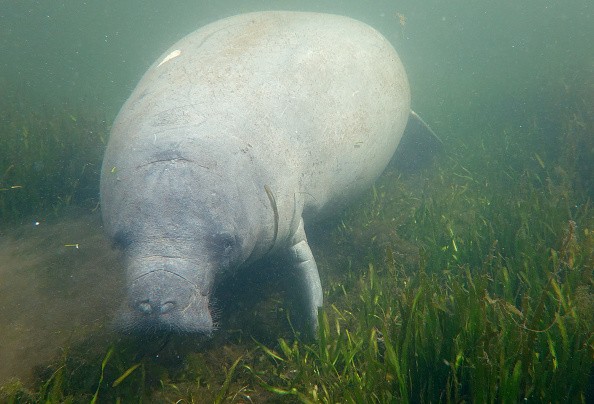Florida rescuers finally released 12 manatees into the wild at the Blue Spring State Park after going to rehabilitation and conservation efforts.
The conservation of manatees has been essential to saving their species from population decline.
Records showed that the Florida manatee is considered a known animal in Florida, but their species has declined, listing them in Endangered Species Act.
Returning Manatees into the wild

October 05, 2021 in Homosassa, Florida. Rescuers Release 12 Manatees Into the Wild After Conservation, Recovery Efforts
According to CNN's recent report, the 12 rescued manatees suffered from injuries and starvation on the Florida coastlines.
With the help of conservation groups, they were given new life.
CNN added that some of the rescued manatees were also orphaned calves.
As they were released into the wild, they were given GPS tracking devices to help researchers monitor their safety in the new habitat.
In addition, the tracking devices would help look at how the manatees adapted and survived in the wild.
Also Read: Playful Young Giraffe in New York City Dies After Neck Stuck in Enclosure Gates
Meanwhile, Save Manatee's latest press release explained that the Blue Spring State Park is an essential habitat for manatees in parts of Florida.
Some of the rescued manatees are the following:
- In 2021, two manatees named Ferret and Finch were rescued. Both underwent rehabilitation and conservation efforts by Miami Seaquarium.
- SeaWorld Orlando helped to save and rehabilitate an injured calf named Bianca, together with a manatee named Artemis, in 2020
The estimate showed that there was about 5,733 population of manatees in January - February 2019 data.
Did you know? More facts about amazing manatees in Florida
According to Save Manatee Organization, manatees thrive in saltwater bays, estuaries, coastal and freshwater areas.
They are mostly in Florida during the winter season.
However, manatees move to parts of Texas or Massachusetts in the summer season.
They feed on small fish and plants in their areas.
On the contrary, the Save Manatee added Manatees have suffered from human-related activities, resulting in a significant population decline. Some of the listed activities are the following:
- Habitat loss and flood control activities
- Drowned canal
- Fishing gear entanglement
Recently, the Associated Press (AP) and Nature World News reported that sea cows and abalone species are on the Threatened Species List due to the impact of climate change and pollution.
The report explained the rising number of marine plants and animals on the brink of extinction.
Meanwhile, the report said the noticeable population decline of dugongs or sea cows in parts of Africa.
Ultimately, climate change has been one of the concerns affecting marine animals.
The impact of marine heat waves could make it more difficult for animals to survive underwater.
As a result, immediate conservation efforts for the said species have been crucial to saving them from the possible brink of extinction.
The commitment of communities and countries is essential for the successful protection and conservation of measurables for threatened marine animals.
Related Article: Rare Sight of Snowy Owl Spotted in Orange County Home, California
For more similar, don't forget to follow Nature World News.
© 2024 NatureWorldNews.com All rights reserved. Do not reproduce without permission.





